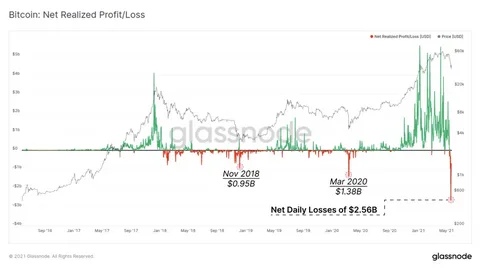Introduction
The cryptocurrency market has always been volatile, with meteoric rises and devastating crashes. However, the scale of losses experienced in 2024 has surpassed expectations, reaching a staggering $2.11 billion.
This figure not only eclipses the losses of previous years but has sparked debates about the vulnerabilities within the crypto ecosystem. In this comprehensive analysis, we will delve into the reasons behind this unprecedented surge in losses, compare it to the figures from 2023, and explore the factors contributing to this alarming trend.
In this post, we will cover the key drivers of these losses, the impact on investors and crypto exchanges, and what this means for the future of the digital asset market. We will also explore what measures are being taken to prevent further escalation. By the end, you’ll have a deeper understanding of how these crypto losses surged to new heights and what the future holds for investors.

The 2024 Surge: Why Have Crypto Losses Skyrocketed?
The $2.11 billion in crypto losses for 2024 marks a significant surge from 2023’s figures, which, while high, were considerably lower. To provide a comprehensive analysis, it’s essential to understand the multifaceted nature of these losses, which stem from multiple sources, including hacking, fraud, exchange collapses, and even market manipulation.
A Rising Trend: 2023 vs. 2024 Figures
Crypto losses in 2023 reached nearly $1.5 billion, a shocking figure at the time, yet 2024’s losses have risen by more than 40%. The surge can be attributed to a combination of external threats and internal vulnerabilities, both of which have left investors reeling. To put this into perspective, 2024’s total crypto losses of $2.11 billion represent one of the largest amounts lost in any calendar year in the history of digital assets.
Hacking remains one of the primary culprits, with sophisticated cybercriminals exploiting security flaws in both decentralized finance (DeFi) platforms and centralized exchanges. The increasing complexity of these attacks makes it difficult for regulators and exchanges to stay ahead of the curve. In addition to hacking, exit scams and fraudulent initial coin offerings (ICOs) have surged, leaving investors with empty pockets.
While these issues were prevalent in 2023, the scale and frequency have only increased in 2024, demonstrating a worrying trend for the industry. The constant evolution of cyber threats is one of the key factors driving the surge in crypto losses, as both centralized and decentralized platforms struggle to keep their defenses intact.
Major Hacks and Frauds in 2024
Several high-profile incidents have contributed to the surge in crypto losses throughout 2024. One of the most notable cases was the collapse of a prominent DeFi lending platform, which resulted in a loss of $400 million in investor funds. The platform was targeted by hackers exploiting vulnerabilities in its smart contracts, leaving the developers scrambling to mitigate the damage.
In another case, a popular centralized exchange suffered a data breach that led to the loss of $300 million in customer assets. This incident, in particular, highlighted the risks associated with centralized entities that hold large amounts of customer funds in hot wallets—digital storage that is continuously connected to the internet, making it more susceptible to hacking.
These examples illustrate how crypto losses in 2024 have escalated beyond those of 2023, not only in terms of the amounts lost but also in the sophistication of the attacks. Both DeFi platforms and centralized exchanges have been targeted with increasing precision, contributing to the year’s $2.11 billion total.
The Role of Regulation and Security
One of the reasons for the surge in crypto losses in 2024 is the evolving regulatory landscape. While governments around the world have made efforts to establish clearer guidelines for the industry, there is still a lack of comprehensive regulation that can effectively mitigate the risks. The crypto market, by its decentralized and often anonymous nature, is difficult to regulate, leaving it vulnerable to fraud, hacking, and other criminal activities.
Weaknesses in Security Infrastructure
A key factor in the 2024 surge of crypto losses is the inadequacy of security infrastructure across many platforms. As the value of assets held in digital wallets has skyrocketed, so too has the appeal for malicious actors looking to exploit vulnerabilities. The sheer complexity of DeFi protocols, in particular, has led to multiple cases of security breaches. The most notable case saw over $600 million worth of assets stolen from a single platform due to a flaw in its underlying code.
In addition to this, many smaller exchanges have struggled to implement the robust security measures necessary to protect against attacks. This has resulted in a higher number of security incidents compared to 2023, exacerbating the total crypto losses seen this year. The increased complexity of attacks in 2024, including advanced forms of phishing, social engineering, and multi-stage hacks, further complicates the problem.
The Need for Regulatory Reform
Despite these losses, the regulatory response has been slow. Although the Securities and Exchange Commission (SEC) and other global regulatory bodies have issued some guidelines, they have not yet established a universal framework to protect investors. The lack of comprehensive regulation has allowed many fraudulent schemes and poorly secured platforms to operate unchecked.
Countries like the United States, the European Union, and China have made strides toward regulatory reform, but the lack of coordination between jurisdictions has made enforcement difficult. In 2024, the surge in crypto losses has underscored the need for global regulatory cooperation to establish consistent and enforceable rules.
Without significant reform, the industry is likely to continue experiencing large-scale losses, undermining investor confidence and stunting the growth of digital assets as a legitimate financial instrument.
The Human Factor: Investor Behavior and Psychological Traps
Another major contributor to the surge in crypto losses in 2024 is human behavior. Investors often fall into psychological traps such as fear of missing out (FOMO), greed, and overconfidence, which lead them to make poor decisions. These tendencies were evident in 2023 but have become even more pronounced in 2024 as the market has become more complex and volatile.
The Rise of Scams and Ponzi Schemes
While the technical vulnerabilities of the crypto space are significant, a considerable portion of 2024’s crypto losses stems from scams and Ponzi schemes. These fraudulent schemes prey on the inexperienced, exploiting the hype around digital currencies and promising outsized returns. One major example in 2024 was a Ponzi scheme that managed to collect over $200 million from unsuspecting investors before the orchestrators vanished with the funds.
Scams like these play into common cognitive biases. For example, the desire to get rich quickly can cloud judgment, causing investors to ignore red flags. Furthermore, the decentralized nature of cryptocurrency, where transactions can be anonymous and irreversible, makes it easier for scammers to disappear without a trace.
The number of frauds in 2024 has far surpassed the figures seen in 2023, leading to a surge in crypto losses. These losses highlight the importance of education and due diligence for anyone looking to invest in the digital asset space.
Social Media and Misinformation
In addition to scams, social media platforms have become breeding grounds for misinformation, leading to poor investment decisions. Influencers and pseudo-experts often promote dubious projects or give misleading financial advice, resulting in significant losses for their followers.
In 2024, the problem of misinformation has only worsened. Some investors have found themselves swept up in speculative “pump and dump” schemes, where the price of a cryptocurrency is artificially inflated, only to crash shortly after the orchestrators sell off their holdings.
This misinformation-driven trading has contributed significantly to the $2.11 billion in crypto losses, as novice investors often fail to recognize these schemes until it’s too late.
Technological Evolution and the Arms Race with Hackers
2024 has seen not only an increase in the number of crypto-related crimes but also the sophistication of these attacks. As blockchain technology evolves, so too do the tools that criminals use to exploit vulnerabilities. In response, exchanges and blockchain developers have had to engage in a constant arms race with hackers, who are increasingly using cutting-edge technology to breach defenses.
Evolution of Attack Vectors
One of the reasons for the surge in crypto losses in 2024 is the evolution of attack vectors. In 2023, the focus was primarily on simple phishing scams and brute force attacks on exchange wallets. However, in 2024, cybercriminals have adopted new, more advanced techniques such as smart contract vulnerabilities, oracle manipulation, and flash loan attacks.
For example, flash loan attacks—where attackers borrow large amounts of cryptocurrency in an instant and use it to manipulate the market—have become more common in 2024. These attacks exploit the decentralized nature of DeFi platforms, allowing attackers to artificially inflate or deflate token prices, profiting from the difference.
Another new attack vector involves oracle manipulation. Oracles are services that provide external data to blockchain platforms, which is often used to trigger smart contracts. By manipulating the data provided by oracles, hackers can execute fraudulent trades or cause automated systems to behave unpredictably.
These advanced techniques have driven the surge in crypto losses and show no signs of abating. Without significant improvements in security infrastructure and regulatory oversight, the losses will likely continue to escalate.
The Role of AI in Cybercrime
Artificial intelligence (AI) has played a growing role in both defending against and facilitating crypto losses. On the one hand, exchanges and cybersecurity firms are using AI to detect anomalies in transaction patterns, helping to identify potential hacks or fraudulent activities before they occur.
On the other hand, cybercriminals are also using AI to enhance their attacks. AI-powered algorithms can scour large datasets for vulnerabilities, automate phishing attacks, and even carry out sophisticated social engineering campaigns. The use of AI by criminals represents another layer of complexity in the battle to prevent crypto losses, contributing to the surge in losses seen in 2024.
Conclusion: Where Does the Crypto Market Go From Here?
The surge in crypto losses in 2024, which has reached $2.11 billion, represents a significant challenge for the industry. While technological advancements and regulatory efforts are underway, the decentralized and rapidly evolving nature of cryptocurrency makes it a difficult space to protect. Hackers and scammers are constantly finding new ways to exploit vulnerabilities, while investors continue to fall prey to scams and psychological traps.
This comprehensive analysis highlights the need for a multifaceted approach to addressing these losses. Stronger regulation, better security infrastructure, and more investor education are crucial if the crypto market is to grow in a sustainable way. As we move forward, both developers and investors will need to stay vigilant to protect against the risks that have plagued 2024.
What do you think about the rise in crypto losses this year? Are there solutions that the industry hasn’t explored yet? Share your thoughts in the comments below—your insights could spark valuable discussions!






